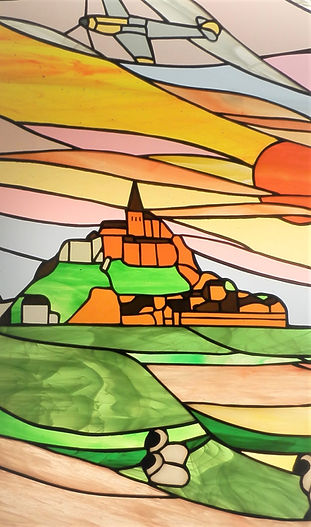
Tiffany Stained Glass
Tiffany stained glass is an assembly of pieces of glass, colored or not, which can be painted, ground on the edge, crimped with copper ribbon and welded over the entire length.
History
It was in 1890 when Louis-Confort TIFFANY, son of great New York jewelers, and painter, managed to simplify the stained glass technique by replacing the lead profile with a copper ribbon and eliminating the paint replacing it with the opaline glass manufacturing that can offer a wide range of effects and textures. It is fully part of the movement of Art Nouveau while bringing the stained glass into the industrial era.
This method allows to realize doors, windows, small objects and jewels as well as volumes like the famous lamps "tiffany".
The manufacturing steps

The Model
01.
Create the design of the future stained glass object with the chosen colors and by numbering each part of your design.

The Polishing
05.
Use the diamond grinder to polish each piece of glass for precise assembly.

The Cardboard Model
02.
Make a full-size model on cardboard.

The Crimping
06.
Crimp each piece of glass with a self-adhesive copper tape.

The Adjustment
03.
Cut the cardboard so as to form the templates which will serve as a guide for cutting the glass.

The Soldering
07.
Gather all the pieces on the drawing to weld them to each other.

Cutting the glass
04.
Design the template contour on the glass, cut it and remove the remaining pieces with the detaching pincer.


